Weymouth, Dorset
Up to 1834
A parliamentary report of 1777 recorded parish workhouses operating in Melcombe Regis (for up to 44 inmates) and Portesham (50 inmates).
In 1805, a lease was granted "to the parish officers of the Chapelry of Weymouth to build a poorhouse on a piece of wasteland on the road to Wyke Regis" (Wolff & West, 1972). This is almost certainly the same site on which the Weymouth Union workhouse was built in 1836. Melcombe Regis had a poorhouse in West Street, Melcombe Regis which seems to have continued in use for a number of years after 1836.
After 1834
Weymouth Poor Law Union was formed on 14th January 1836. Its operation was overseen by an elected Board of Guardians, 22 in number, representing its 18 constituent parishes as listed below (figures in brackets indicate numbers of Guardians if more than one):
County of Dorset: Abbotsbury, Bincomb, Broadway, Buckland Ripers, West Chickerell, Fleet, Langton Herring, Melcombe Regis (3), Osmington, Owermoigne, Portisham, Portland (2), Preston, Poxwell, Radipole, Upwey, Weymouth (2), Wyke Regis.
The population falling within the Union at the 1831 census had been 16,947 with parishes ranging from Poxwell (population 99) to Melcombe Regis (5,126), Portland (2,670) and Weymouth itself (2,529). The average annual poor-rate expenditure for the period 1833-5 had been £6,213 or 7s.4d. per head of the population.
The new Weymouth Union workhouse, erected in 1836, was based on one of the Poor Law Commissioners' model plans by Sampson Kempthorne, adapted by two members of the Weymouth Board of Guardians, Thomas Dobson and Thomas Hill Harvey. Its layout can be seen on the 1926 map below, by which time the workhouse had become officially known as Weymouth Poor Law Institution.
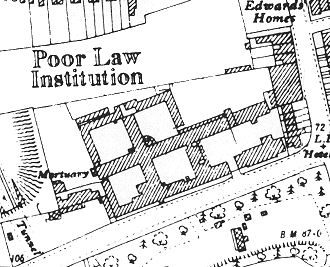
Weymouth workhouse site, 1926.
The entrance block, along Wyke Road, has an impressive facade dressed in Portland stone.

Weymouth entrance block from south-west, c.1905.
© Peter Higginbotham.
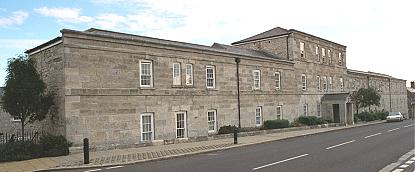
Weymouth entrance block from south-west, 2000.
© Peter Higginbotham.
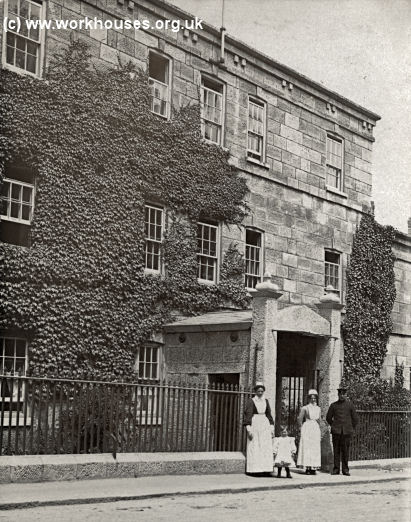
Weymouth entrance from south-west, c.1905.
© Peter Higginbotham.
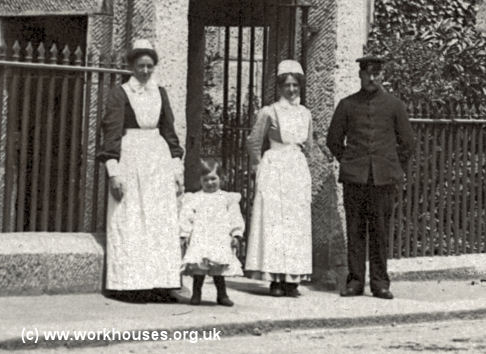
Weymouth entrance (detail) from south-west, c.1905.
© Peter Higginbotham.

Weymouth rear of entrance block from north-west, 2000.
© Peter Higginbotham.
The main accommodation ranges radiated from a central hub. The eastern range was considerably elongated.
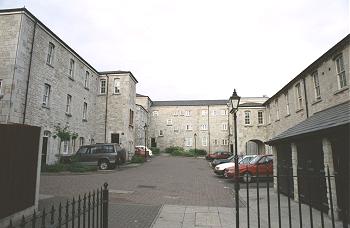
Weymouth entrance block, south and east ranges from the east, 2000.
© Peter Higginbotham.

Weymouth from the north-west, 2000.
© Peter Higginbotham.
A separate block housing the Guardians' board-room was later added at the east of the main building.

Weymouth Union board-room from south-west, c.1905.
© Peter Higginbotham.
Hardly any records for the Weymouth Union have survived. The Guardians' minutes for 1924 indicate that a relatively severe regime was still in place:
- February 19th - "The suggestion of an evening meal being provided. It was resolved that in lieu of an extra meal, the last meal served (supper) at 5.30-6.30 p.m. be augmented by the inclusion of 4oz cake per inmate on Tuesday and Friday as well as on Sunday, varied by 1oz jam on Monday, Wednesday, Thursday and Saturday."
- July 8th - "Walks for aged inmates." The subject was discussed and finally abandoned.
- November 25th - The Master was authorised to allow 1oz tobacco per week to two inmates in respect of exceptional work done by them."
A detached VD clinic (euphemistically called the County Dispensary) was built on the eastern side of the building in 1937 but has since been demolished. After 1939 the workhouse became Portwey Hospital. A new maternity centre opened at the site in 1948.
The hospital closed in 1987. In 1992-93, the site was redeveloped for residential use and is now, somewhat appropriately, called Union Court.
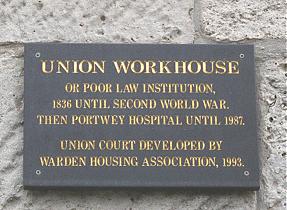
Weymouth, 2000.
© Peter Higginbotham.
Staff
Inmates
Records
Note: many repositories impose a closure period of up to 100 years for records identifying individuals. Before travelling a long distance, always check that the records you want to consult will be available.
- Dorset History Centre, Bridport Road, Dorchester DT1 1RP. Very few records survive. Holdings include: Guardians' minutes (1923-25).
Bibliography
- Maureen Roddy and John West (1983), Weymouth - An Illustrated History.
- Dorset Workhouses (1980, Dorset Countryside Treasures).
Links
- None.
Unless otherwise indicated, this page () is copyright Peter Higginbotham. Contents may not be reproduced without permission.


